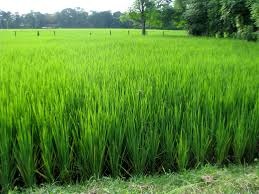A new study has identified “superstar” varieties of rice that can reduce fertilizer loss and cut down on environmental pollution in the process according to Science daily.
The study, authored by Professor Herbert Kronzucker in collaboration with a team, looked at 19 varieties of rice to see which ones were more efficient at using nitrogen.
“We have this bucolic idea of agriculture — animals grazing or vast fields of majestic crops — but the global reality is it’s one of the biggest drivers of environmental pollution and climate change,” says Kronzucker.
Nitrogen, when applied as fertilizer, is taken up inefficiently by most crops. In tropical rice fields, as much as 50 to 70 per cent can be lost. The problem is that nitrogen negatively impacts water quality by contaminating nearby watersheds or leaching into ground water. It’s also a significant source of gases such as ammonia and nitrogen oxide, which are not only harmful to aquatic life but also a significant source of greenhouse gas emissions.
While nitrogen is one of three main nutrients required for crops to grow, it also costs the most to produce, adds Kronzucker.
“Anything we can do to reduce demand for nitrogen, both environmentally and for farmers.”
Kronzucker’s study for the first time identifies a novel class of chemicals produced and released by the roots of rice crops that directly influence the metabolism of soil microbes. They found that key microbial reactions that lead to an inefficiency in nitrogen capture can be significantly reduced in certain varieties of rice plants through the action of those specific chemicals released from root cells.
One of the main reasons crops waste so much fertilizer is that they were bred that way. As a result, plant geneticists bred crops that responded to high fertilizer use regardless of how efficient they were at using nitrogen.
N.H.Kh


 Home
Home